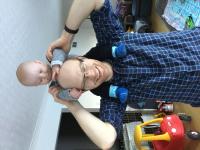Article,
Bilingualism contributes to reserve and working memory efficiency: Evidence from structural and functional neuroimaging
Neuropsychologia, (2021)
DOI: https://doi.org/10.1016/j.neuropsychologia.2021.108071
Abstract
This study compared brain and behavioral outcomes for monolingual and bilingual older adults who reported no cognitive or memory problems on three types of memory that typically decline in older age, namely, working memory (measured by n-back), item, and associative recognition. The results showed that bilinguals were faster on the two-back working memory task than monolinguals but used a set of frontostriatal regions less than monolinguals. There was no group difference on an item/associative recognition task. In brain structure, gray matter volume and white matter integrity (fractional anisotropy) were generally lower in bilinguals than in monolinguals, but bilinguals had better white matter integrity than monolinguals in the bilateral superior corona radiata and better gray matter density in the left inferior temporal gyrus. These regions may help preserve bilinguals’ executive functions despite generally more significant atrophy throughout the brain than monolinguals in that these structures contribute to efficient communication between executive frontal regions and subcortical motor regions, and perceptual pathways. Reliable negative correlations between brain structure and age were only observed in bilinguals, and to the extent that bilinguals (but not monolinguals) had better brain structure, their performance was enhanced. Collectively, the findings provide evidence for reserve in bilingual older adults.
